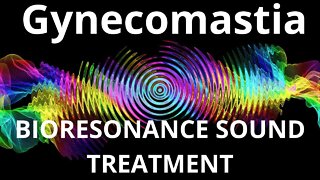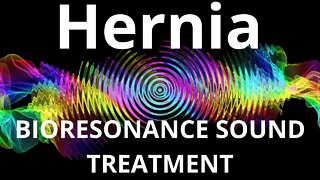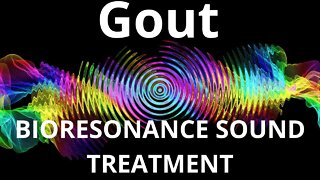Headache_Session of resonance therapy_BIORESONANCE SOUND THERAPY
Primary headaches
A primary headache is caused by overactivity of or problems with pain-sensitive structures in your head. A primary headache isn't a symptom of an underlying disease.
Chemical activity in your brain, the nerves or blood vessels surrounding your skull, or the muscles of your head and neck (or some combination of these factors) can play a role in primary headaches. Some people may also carry genes that make them more likely to develop such headaches.
The most common primary headaches are:
Cluster headache
Migraine
Migraine with aura
Tension headache
Trigeminal autonomic cephalalgia (TAC), such as cluster headache and paroxysmal hemicrania
A few headache patterns also are generally considered types of primary headache, but are less common. These headaches have distinct features, such as an unusual duration or pain associated with a certain activity.
Although generally considered primary, each could be a symptom of an underlying disease. They include:
Chronic daily headaches (for example, chronic migraine, chronic tension-type headache, or hemicranias continua)
Cough headaches
Exercise headaches
Sex headaches
Some primary headaches can be triggered by lifestyle factors, including:
Alcohol, particularly red wine
Certain foods, such as processed meats that contain nitrates
Changes in sleep or lack of sleep
Poor posture
Skipped meals
Stress
Secondary headaches
A secondary headache is a symptom of a disease that can activate the pain-sensitive nerves of the head. Any number of conditions — varying greatly in severity — may cause secondary headaches.
Possible causes of secondary headaches include:
Acute sinusitis (nasal and sinus infection)
Arterial tears (carotid or vertebral dissections)
Blood clot (venous thrombosis) within the brain — separate from stroke
Brain aneurysm
Brain AVM (arteriovenous malformation)
Brain tumor
Carbon monoxide poisoning
Chiari malformation (structural problem at the base of your skull)
Concussion
Coronavirus disease 2019 (COVID-19)
Dehydration
Dental problems
Ear infection (middle ear)
Encephalitis (brain inflammation)
Giant cell arteritis (inflammation of the lining of the arteries)
Glaucoma (acute angle closure glaucoma)
Hangovers
High blood pressure (hypertension)
Influenza (flu) and other febrile (fever) illnesses
Intracranial hematoma
Medications to treat other disorders
Meningitis
Monosodium glutamate (MSG)
Overuse of pain medication
Panic attacks and panic disorder
Persistent post-concussive symptoms (Post-concussion syndrome)
Pressure from tight headgear, such as a helmet or goggles
Pseudotumor cerebri (idiopathic intracranial hypertension)
Stroke
Toxoplasmosis
Trigeminal neuralgia (as well as other neuralgias, all involving irritation of certain nerves connecting the face and brain)
Music affects a person, it can calm and cheer up, sounds can heal. The therapeutic effect is due to the frequency fluctuations of various sounds that resonate with various organs of the body. Sounds have bioresonance compatibility with the vibrations of human internal organs, which is the basis of the positive effect of sound treatment. The sound vibrations of music trigger many mechanisms of higher nervous activity in the patient's subconscious and start the healing process.
Sound therapy does not replace medical treatment, but complements it, improves the positive dynamics of treatment and speeds up recovery.
TO ACHIEVE A POSITIVE RESULT, DAILY LISTENING TO VIDEOS IS REQUIRED.
#bioresonance#healing_energy#healing_frequencies
https://pin.it/2oG3HeK
Get rewarded for shopping online at over 20,000 stores
https://www.befrugal.com/rs/CMVUAAJ/
https://www.extrabux.com/r/576e52f145
-
 32:08
32:08
BIORESONANCE SOUND THERAPY
1 year agoGynecomastia_Session of resonance therapy_BIORESONANCE SOUND THERAPY
57 -
 32:08
32:08
BIORESONANCE SOUND THERAPY
1 year agoHernia_Session of resonance therapy_BIORESONANCE SOUND THERAPY
202 -
 32:08
32:08
BIORESONANCE SOUND THERAPY
1 year agoHemorrhoids_Session of resonance therapy_BIORESONANCE SOUND THERAPY
77 -
 32:08
32:08
BIORESONANCE SOUND THERAPY
1 year agoGout_Session of resonance therapy_BIORESONANCE SOUND THERAPY
69 -
 1:35:13
1:35:13
Roseanne Barr
2 days ago $74.67 earnedKeep My Name Out Yo M*Therf*Cking Mouth! | The Roseanne Barr Podcast #47
186K421 -
 1:19:00
1:19:00
Steven Crowder
3 days agoBradley Martyn and Vitaly's Hollywood Pedo Bust Goes Wrong! Guests: Alex Rosen | Vivek Ramaswamy
681K1.1K -
 53:40
53:40
The Osbournes
6 days ago $1.11 earnedWould You Eat a Monkey? Osbourne's Wildest Meals
89.1K17 -
 1:19:01
1:19:01
Steve-O's Wild Ride! Podcast
3 days agoMike The Situation Went To Prison & Owes Millions, But Remains Grateful - Wild Ride #213
96.3K14 -
 9:45
9:45
RealReaper
1 day ago $7.17 earnedVelma is The Worst Show of 2024: Part 1
93.2K107 -
 23:13
23:13
InfiniteWaters(DivingDeep)
1 day agoBiggest Solar Storm in 20 Years Could Cripple Internet, Phones, And Power Grids (Prepare Now!) 👁️
108K142